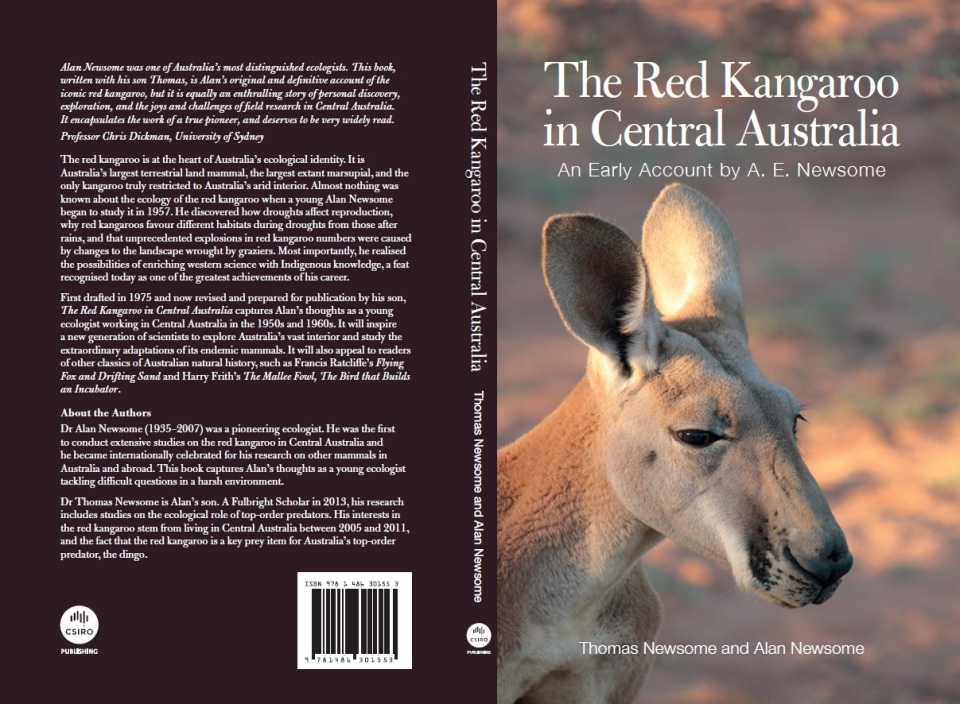2016 Update – Book and New Papers
It’s been a while since my last post, but a lot has happened in 2016. Three exciting updates are outlined below.
Update 1: Book Release
You can view a copy of the promotional material, including how to pre-order a copy of my new book “The Red Kangaroo in Central Australia: An Early Account by AE Newsome” HERE

Update 2: New Paper – Food Habits of the World’s Grey Wolves
In this paper we provide the first comprehensive review of grey wolf diets around the world. Below is a copy of abstract, and you can view the paper HERE
Abstract
1. Grey wolves (Canis lupus) have been studied extensively, but there has been no detailed review of the species’ feeding ecology. This is despite growing debate about how to conserve wolf populations while limiting their impacts on wild or domestic ungulates. Here, we assess the extent to which grey wolf diet varies among and within North America, Europe and Asia. We discuss the implications of the results for conservation and management.
2. We derived dietary data from searches of published literature. We grouped studies based on their bioregional location. We compared grey wolf diet among locations using nonmetric multidimensional scaling and analysis of similarity. We assessed whether increased human impacts would decrease grey wolf dietary diversity. Finally, using studies from southern Europe, we assessed whether the proportion of wild ungulates in grey wolf diet increased over time, coincident with a decline in domestic species in grey wolf diet over time.
3. We compiled dietary data from 177 studies incorporating 94,607 scat and stomach samples. Grey wolf diet was dominated by large (240-650 kg) and medium-sized (23-130 kg) wild ungulates, but variation in the proportion of wild ungulates consumed, along with high proportions of domestic and smaller prey species consumed, contributed to the dietary differences found among and within continents.
4. We found no evidence that grey wolf dietary diversity varies globally. However, the result from southern Europe suggests that grey wolves may switch their diets away from domestic species if more wild ungulates are available.
5. The diversity of prey consumed by grey wolves highlights that the species is capable of surviving dramatic anthropogenic upheaval. However, there is an urgent need to increase our understanding of grey wolf foraging ecology in human-dominated landscapes to determine whether restoration of depleted prey populations, coupled with effective damage-prevention measures, will reduce human-wolf conflicts.

Update 3: New Paper – Our Take on the Trophy Hunting Debate

By Lord Mountbatten – Own work, CC BY-SA 3.0, https://commons.wikimedia.org/w/index.php?curid=17953744
